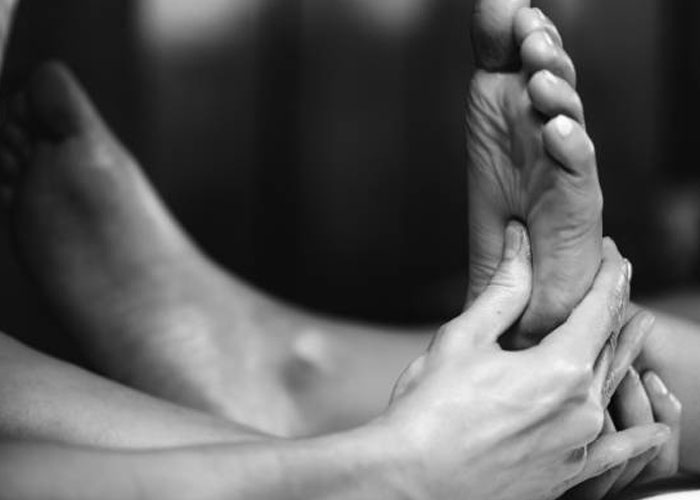Reflexology
What is Reflexology?
Through the application of pressure and massage to the feet, hands and ears, reflexology seeks to encourage healing in the body and relieve stress and tension. Reflexology is based on the principle that certain areas of our feet (reflexes) are connected with other areas of the body through the nervous system.
The arrangement of the reflexes has a direct relationship to the area of the body they affect. For example, the right side of the foot is linked to the right side of the body. While the tips of the toes correspond to the head. The liver, pancreas and kidneys connect to the arch of the foot, and the lower back and intestines towards the heel.
In a session, a reflexologist will apply pressure to certain reflexes. The aim is to stimulate energy flow and send signals around the body - targeting areas of tension.

Reflexology Benefits
Reflexology is a popular and versatile alternative therapy. Some of the most common uses of reflexology include :
- Stress Reduction : Reflexology can help reduce the negative effects of stress.
- Soothing Tired Feet : The techniques and special hand movements can help to ease tension and pain in the feet.
- Reducing pain : Research suggests that the therapy is an effective pain reliever. Improving circulation. Reflexology helps break down deposits in the bloodstream which can affect circulation.
- Enhancing Overall Well-Being : Many people use reflexology on a regular basis to support a healthy mind and body.
Many people also find reflexology helpful in reducing stress-related ailments, including :
- Tension headaches : The application of strokes over certain points on the foot by the big toe is thought to help ease tension headaches.
- Arthritis : Reflexologists may work on specific points on the hands/feet to help with arthritis pain.
- Digestive Disorders : Reflex points for the digestive system are located on the plantar surface of the feet. Reflexologists will focus on these areas to relieve digestive discomfort and ease stress.
- Insomnia : Reflexology can be soothing. The thumb and finger movements over certain reflexes help to target hormonal imbalances that can disrupt sleep.
- Menstrual Problems : Many people find the therapy useful for addressing common menstrual problems. These include severe pain, irregular cycles and general discomfort.
- Back Pain : Pressure on certain reflex points is thought to alleviate nerve problems in the back which can cause pain.
Modern life is increasingly demanding and stressful. Reflexology can be effective in helping to relieve daily stresses and maintain good health and well-being. Remember that reflexology is a complementary therapy and therefore should be used alongside medical care. Please consult your doctor first if you are experiencing any of the above ailments.
Uses of reflexology also extend to post-operative or palliative care. It is a popular therapy among cancer patients who find it helpful for relaxation. For many patients undergoing intensive medical treatment, reflexology can help to boost emotional well-being.
What to do after a reflexology session
To gain the full benefits of reflexology, it is recommended to carry out the following advice 24 hours post-treatment :
- Drink lots of water : This will hydrate the body, improve energy levels and flush out toxins.
- Avoid strenuous exercise and rest for at least two hours after the treatment.
- Avoid stimulants such as alcohol, tea and coffee. These can diminish the effectiveness of the treatment.
- Stick to light, nutritious foods after to help your body to heal.
- Note down any reactions you have for your next session.
- Time : 60min


